Common eyebright is a common name for several plants in the genus Euphrasia and may refer to:
Common eyebright is a common name for several plants in the genus Euphrasia and may refer to:
Sycamore is a name which has been applied to several types of trees, but with somewhat similar leaf forms. The name derives from the ancient Greek συκόμορος (sūkomoros) meaning "fig-mulberry".
Cypress is a common name for various coniferous trees or shrubs of northern temperate regions that belong to the family Cupressaceae. The word cypress is derived from Old French cipres, which was imported from Latin cypressus, the latinisation of the Greek κυπάρισσος (kyparissos). Cypress trees are a large classification of conifers, encompassing the trees and shrubs from the cypress family (Cupressaceae) and many others with the word “cypress” in their common name. Many cypress trees have needle-like, evergreen foliage and acorn-like seed cones.

Reed is a common name for several tall, grass-like plants of wetlands.
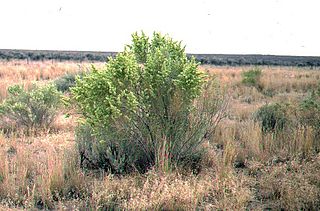
Saltbush is a vernacular plant name that most often refers to Atriplex, a genus of about 250 plants distributed worldwide from subtropical to subarctic regions. Atriplex species are native to Australia, North and South America, and Eurasia. Many Atriplex species are halophytes and are adapted to dry environments with salty soils.

White spruce is a common name for several species of spruce (Picea) and may refer to:

Euphrasia, or eyebright, is a genus of about 450 species of herbaceous flowering plants in the family Orobanchaceae, with a cosmopolitan distribution. They are hemiparasitic on grasses and other plants. The common name refers to the plant's use in treating eye infections.
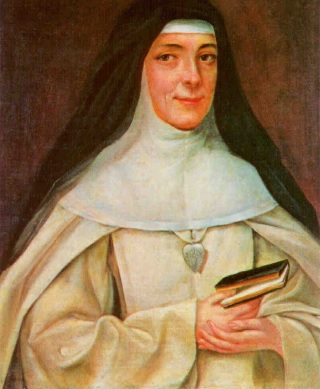
Mary Euphrasia Pelletier, born Rose Virginie Pelletier, was a French Roman Catholic nun, best known as the foundress of the Congregation of Our Lady of Charity of the Good Shepherd.
Euphrasia may refer to:
Camphorweed is a common name for several plants and may refer to:
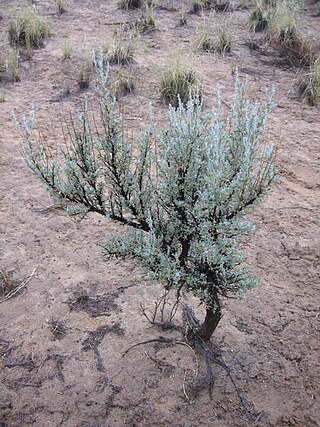
Sagebrush is the common name of several woody and herbaceous species of plants in the genus Artemisia. The best known sagebrush is the shrub Artemisia tridentata. Sagebrushes are native to the North American west.

Euphrasia collina is a perennial herb or subshrub in the genus Euphrasia. Plants grow to between 5 and 60 cm high and have leaves with 1 to 6 teeth per side. The flowers may be white, blue, pink or purple, sometimes blotched with yellow on the lower petal.
Euphrasia Eluvathingal was an Indian Carmelite nun of the Syro-Malabar Church, which is an Eastern Catholic Church in Kerala. Euphrasia is said to have had a vision of the Holy Family, at which point the illness she had long felt ceased. She was canonised as a saint by Pope Francis on 23 November 2014 in Vatican City. Since the beheading of St. John the Baptist is celebrated on August 29, the feast of St. Euphrasia is postponed to August 30 .
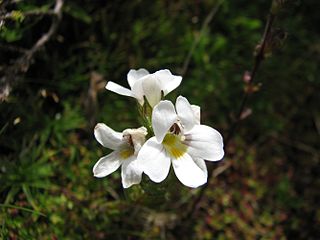
Euphrasia gibbsiae is a perennial herbaceous plant in the genus Euphrasia. It is native to Victoria and Tasmania in Australia. Species in this genus may be called eyebright.

Euphrasia rostkoviana, also known as eyebright or eyewort, is a plant from the genus Euphrasia, in the family Orobanchaceae.
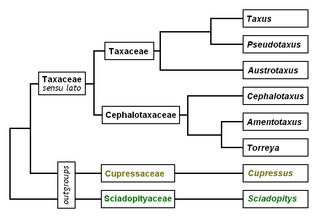
Yew is a common name given to various species of trees.
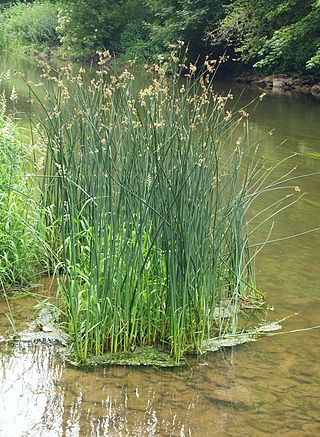
Bulrush is a vernacular name for several large wetland grass-like plants
Monawilkin is a townland in the West Fermanagh Scarplands in the Civil Parish of Inishmacsaint, Barony of Magheraboy, Northern Ireland. The townland has an area of 85.1947 hectares and has previously been referred to as Meenwilkin (1817) and Munadh Wilkin. Monawilkin is the best example of unimproved calcareous grassland in Northern Ireland. This differs from other Sesleria-dominated grasslands in the UK in that it also includes species such as Euphrasia salisburgensis (eyebright). Monawilikin is also an important orchid site, contains the best inland site for moths and butterflies in Northern Ireland, and is the only Northern Irish site for Cupido minimus, the small blue butterfly. Consequently, this area was designated as a special area of conservation (SAC) and area of special scientific interest (ASSI). The Monawilkin SAC land cover comprises 3% water bodies, 5% bogs, marshes, and fringe water vegetation, 13% heath and scrub, 50% dry grassland, 14% humid grassland, and 15% broad-leaved woodland.
Euphrasia vigursii, also known by its common names of Vigur's eyebright or Cornish eyebright, is an endangered annual of the eyebright family which is endemic to Devon and Cornwall. It is a facultative hemiparasite and needs open conditions and regular grazing of larger shrubs and grasses to grow. It is named after C. C. Vigurs, a Cornish doctor and botanist.